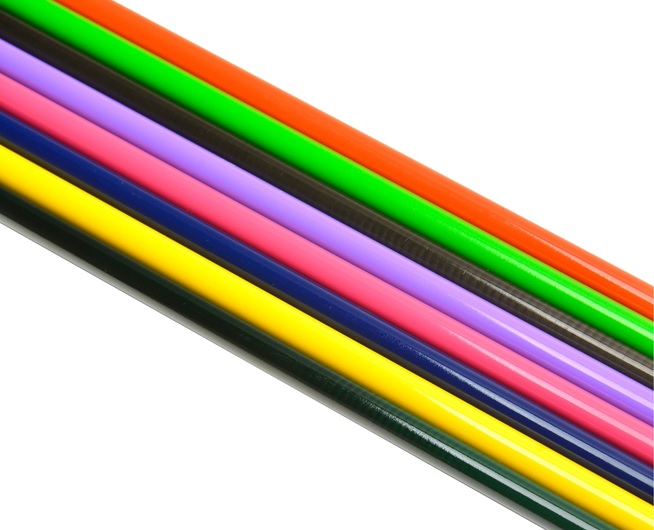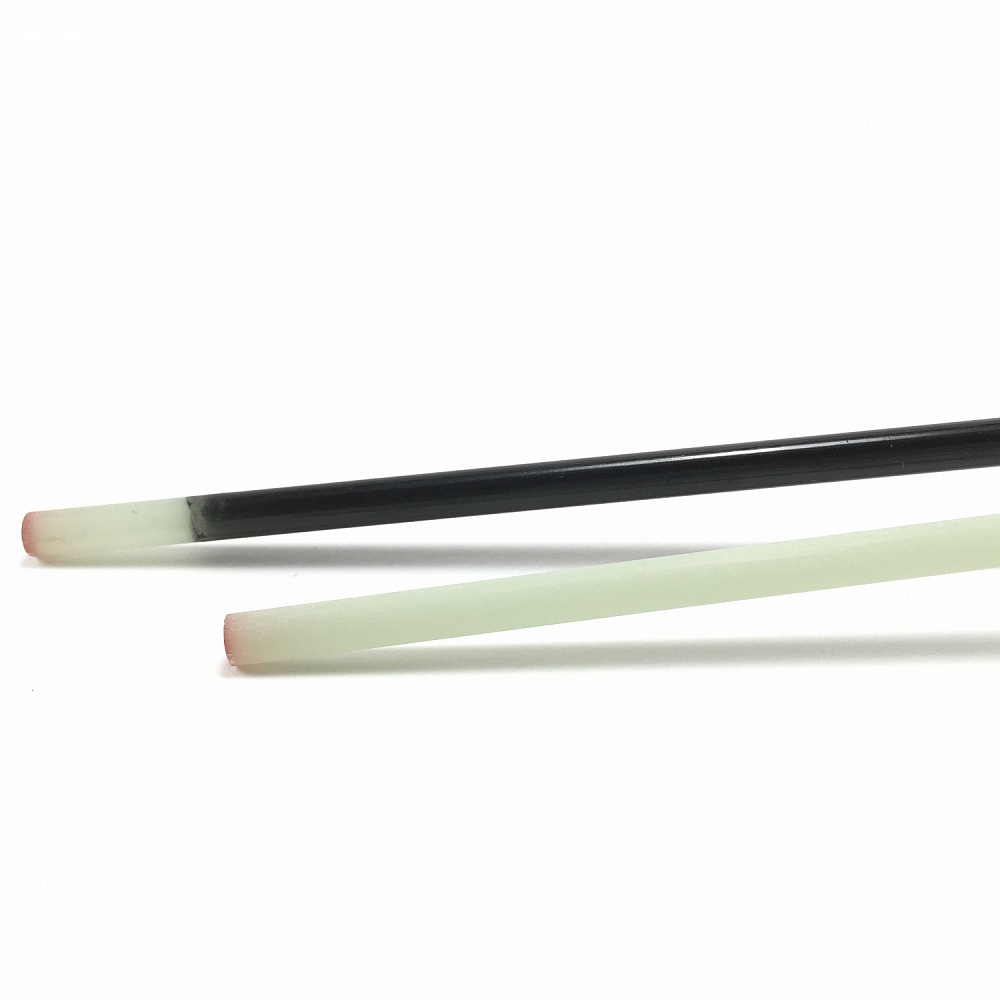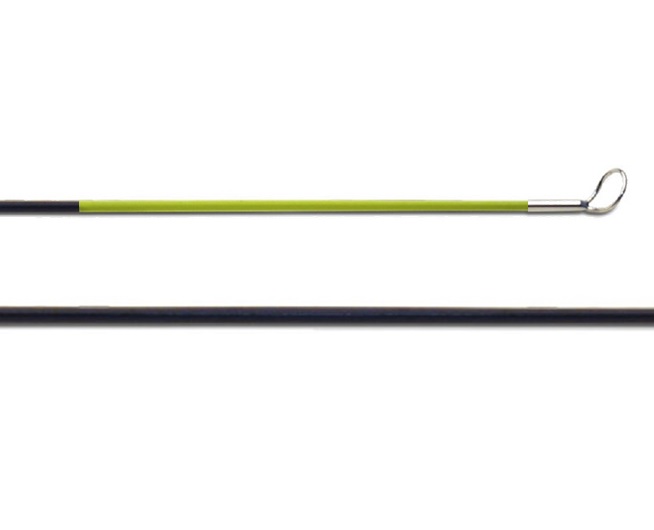Ice fishing rod blanks are crucial components for building custom ice fishing rods. They serve as the foundation for the rod, providing strength and sensitivity to detect fish bites in freezing conditions.
With a wide variety of materials and styles available, ice fishing rod blanks allow anglers to create rods tailored to their preferences and fishing techniques.

Credit: crbproducts.com
Choosing The Right Ice Fishing Rod Blanks
Ice fishing is an exhilarating sport that requires specialized equipment to ensure success on the frozen waters. One of the most critical components of your ice fishing setup is the rod blank. The rod blank forms the backbone of your ice fishing rod, providing strength and sensitivity needed to catch fish in cold conditions. It is essential to choose the right rod blank to optimize your ice fishing experience. In this article, we will explore the importance of ice fishing rod blanks, understand the different types available, and discuss the key factors to consider when selecting the perfect rod blank for your needs.
The Importance Of Ice Fishing Rod Blanks
Ice fishing rod blanks play a crucial role in determining the performance and effectiveness of your ice fishing rod. These blanks are typically made from materials like graphite, fiberglass, or a combination of both. The quality and construction of the rod blank directly impact its sensitivity, flexibility, and strength.
When it comes to ice fishing, sensitivity is of utmost importance. With the fish lurking beneath the ice, the ability to detect even the slightest nibble is essential. A high-quality rod blank will allow you to feel every subtle movement, ensuring you never miss a strike. Additionally, a sensitive blank enhances your ability to distinguish between bottom structure and fish activity, enabling you to position your bait accordingly and increase your chances of success on the ice.
In addition to sensitivity, the flexibility of the rod blank is another crucial factor to consider. Ice fishing often involves fishing in tight spaces, such as ice shelters or small fishing holes. A flexible blank provides better maneuverability and makes it easier to navigate these confined areas. It also facilitates better control over your bait presentation and enhances your ability to deliver precise and accurate casts.
Lastly, the strength and durability of the rod blank are vital for handling the tough conditions of ice fishing. Freezing temperatures, icy surfaces, and powerful fish put your equipment to the test. A sturdy rod blank ensures that your rod can withstand the harsh elements and the force exerted by aggressive fish species without compromising its performance.
Understanding The Different Types Of Ice Fishing Rod Blanks
When selecting an ice fishing rod blank, it is crucial to understand the different types available and their characteristics. Two main options are commonly used for ice fishing rod blanks: graphite and fiberglass.
Graphite rod blanks are popular among ice anglers for their exceptional sensitivity and lightweight construction. These blanks transmit vibrations quickly, allowing you to feel even the subtlest of bites. They also offer excellent strength-to-weight ratio, making them easy to handle and reducing fatigue during long hours on the ice. Graphite blanks are ideal for targeting smaller, more delicate fish species.
Fiberglass rod blanks, on the other hand, are known for their impressive durability and strength. They are less sensitive than graphite blanks but offer excellent power and flexibility, making them suitable for handling larger fish species. Fiberglass blanks can better withstand heavy pressure, making them a reliable choice for anglers targeting larger predators like pike or walleye.
Factors To Consider When Selecting Ice Fishing Rod Blanks
Choosing the perfect ice fishing rod blank can seem overwhelming with the myriad of options available. However, considering a few key factors can help narrow down your choices and find the ideal rod blank for your fishing style and preferences.
| Budget | Determine your budget and look for rod blanks that fall within your price range. Remember that investing in a high-quality rod blank is essential, as it will enhance your overall ice fishing experience and offer better long-term value. |
| Fishing Technique | Consider your preferred fishing technique. Different techniques, such as jigging or deadsticking, require specific attributes in a rod blank. Ensure that the blank you choose complements your chosen method and offers the necessary sensitivity and flexibility. |
| Fish Species | Identify the primary fish species you will be targeting. Smaller, more delicate fish may require a more sensitive graphite blank, while larger predators may demand the durability and strength of a fiberglass blank. Choose a rod blank that suits your target species. |
| Rod Length and Power | Select the appropriate rod length and power rating based on your fishing environment and target species. Longer rods offer better line control and allow for longer casts, while shorter rods provide better maneuverability in tight spaces. Power ratings determine the rod’s strength and ability to handle heavy fish. |
By considering these factors and evaluating your specific requirements, you can narrow down your options and choose the perfect ice fishing rod blank that will optimize your fishing experience and increase your chances of hooking that trophy fish.
Popular Materials For Ice Fishing Rod Blanks
When it comes to ice fishing, having the right equipment is crucial. One of the most important components of a successful ice fishing setup is the rod blank. The material of the rod blank determines its strength, sensitivity, and overall performance. In this article, we will explore three popular materials used for ice fishing rod blanks: fiberglass, graphite, and carbon fiber.
Fiberglass Ice Fishing Rod Blanks
Fiberglass ice fishing rod blanks are known for their durability and resistance to impact. They are less prone to breaking or snapping, making them a great choice for anglers who fish in harsh conditions. Fiberglass blanks offer a moderate amount of sensitivity, allowing you to feel the slightest nibbles. While not as sensitive as graphite or carbon fiber, fiberglass rods provide a good balance between strength and responsiveness.
Graphite Ice Fishing Rod Blanks
Graphite ice fishing rod blanks are highly popular among experienced anglers. They are lightweight and offer excellent sensitivity, allowing you to detect even the most subtle bites. Graphite rods provide a faster response, making it easier to set the hook quickly. This material is ideal for anglers who prefer finesse fishing techniques. However, graphite rods may not be as durable as fiberglass or carbon fiber, and they can be more prone to breaking.
Carbon Fiber Ice Fishing Rod Blanks
Carbon fiber ice fishing rod blanks are the newest addition to the market. They combine the benefits of both fiberglass and graphite, offering the perfect balance between power and sensitivity. Carbon fiber rods are incredibly lightweight and provide excellent sensitivity, allowing you to detect even the slightest movements underwater. They also offer superior strength and durability, making them a great choice for anglers who frequently target larger fish species. Although carbon fiber rods can be more expensive, their performance and longevity make them worth the investment.
Advantages And Disadvantages Of Different Ice Fishing Rod Blanks
Ice fishing rod blanks offer a range of advantages and disadvantages. Some blanks provide enhanced sensitivity and flexibility, while others prioritize durability and strength. However, choosing the right blank can greatly impact your ice fishing experience.
When it comes to ice fishing, choosing the right fishing rod is essential for a successful and enjoyable experience on the frozen lakes. Ice fishing rod blanks, which are the main component of a fishing rod, come in various materials such as fiberglass, graphite, and carbon fiber. Each material has its own unique characteristics, offering distinct advantages and disadvantages for ice anglers. In this section, we will explore the pros and cons of different ice fishing rod blanks.
Pros And Cons Of Fiberglass Ice Fishing Rod Blanks
Fiberglass ice fishing rod blanks have long been a popular choice among anglers due to their durability and affordability. These blanks are known for their strength, making them ideal for ice fishing in harsh conditions. Fiberglass blanks are less prone to breakage and can withstand heavy loads, making them suitable for targeting larger fish species. However, fiberglass blanks are generally heavier compared to other materials, which can cause fatigue during long ice fishing sessions. Additionally, they have a slower action, which may affect the sensitivity and responsiveness of the rod.
Pros And Cons Of Graphite Ice Fishing Rod Blanks
Graphite ice fishing rod blanks have gained popularity among experienced ice anglers for their lightweight and sensitive nature. These blanks are incredibly light, allowing fishermen to hold the rod for extended periods without feeling fatigued. The sensitive nature of graphite blanks enables anglers to detect even the slightest nibbles, offering enhanced bite detection. However, graphite blanks are more prone to breakage compared to fiberglass blanks, making them less suitable for heavy-duty ice fishing. Additionally, these blanks tend to be more expensive than fiberglass options, limiting their accessibility for budget-conscious anglers.
Pros And Cons Of Carbon Fiber Ice Fishing Rod Blanks
Carbon fiber ice fishing rod blanks represent the pinnacle of modern ice fishing technology. These blanks are known for their exceptional strength-to-weight ratio, offering unmatched performance on the ice. Carbon fiber blanks are incredibly lightweight, reducing fatigue during long fishing sessions. They also provide excellent sensitivity, allowing anglers to feel even the slightest movements of their bait. However, carbon fiber blanks can be quite expensive compared to other materials, making them a pricier option for anglers on a budget. Additionally, they may be more delicate and susceptible to damage if not handled with care.

Credit: sportsmensdirect.com
Understanding Ice Fishing Rod Blank Actions
If you’re an avid ice angler, understanding the different aspects of your gear is crucial for success on the frozen waters. One essential component of your ice fishing setup is the rod blank, specifically its action. The action of an ice fishing rod blank determines how it flexes and reacts when under tension. This knowledge allows you to choose the right rod blank for your type of fishing, ensuring optimal performance and a thrilling ice fishing experience.
What Are Ice Fishing Rod Blank Actions?
Ice fishing rod blank actions refer to the level of flexibility and responsiveness a rod exhibits when under pressure. Understanding the various levels, or actions, can assist you in selecting the perfect rod blank based on the targeted species, fishing technique, and personal preference. Ice fishing rods generally come in three main action types:
- Extra-Fast Action: These rod blanks flex only at the tip when pressure is applied, making them highly sensitive and ideal for detecting even the most subtle bites. Extra-fast action rods excel in scenarios where quick reactions are essential, such as aggressive jigging or fishing in deep waters.
- Fast Action: With fast action rods, the flex extends from the tip to approximately the first third of the rod. These blanks offer a balance between sensitivity and the ability to handle larger fish. Fast action rods are versatile and can be used for various ice fishing techniques.
- Medium Action: Rod blanks with medium action bend throughout the top half, providing a forgiving and slower response. These rods are suitable for fishing with lighter tackle and are often preferred for targeting panfish or when using live bait.
Different Levels Of Ice Fishing Rod Blank Actions
Ice fishing rod blanks come in different levels of action, each suited for specific fishing scenarios:
| Action Level | Flexibility | Sensitivity | Best Use |
|---|---|---|---|
| Extra-Fast Action | Minimal flex | High sensitivity | Aggressive jigging, deep water fishing |
| Fast Action | Flex extends to first third of the rod | Good sensitivity | Versatile for various ice fishing techniques |
| Medium Action | Bends throughout top half of the rod | Forgiving response | Fishing with lighter tackle, targeting panfish |
Tips For Maintaining Ice Fishing Rod Blanks
Proper maintenance of your ice fishing rod blanks is crucial to ensure their longevity and optimal performance. By following these tips, you can keep your ice fishing rod blanks in excellent condition and enjoy successful fishing expeditions season after season.
Proper Cleaning And Storage
Regular and thorough cleaning of your ice fishing rod blanks is essential to remove dirt, debris, and moisture that can degrade their performance. Here’s how you can do it:
- After each outing, rinse your ice fishing rod blanks with clean water to remove any residual ice, dirt, or bait.
- Use a soft cloth or sponge to gently wipe down the blanks and remove any remaining dirt or moisture.
- Inspect the guides and reel seat for any signs of damage or corrosion. If necessary, clean them with a mild soap solution and a soft brush.
- Dry your rod blanks thoroughly before storing them to prevent the growth of mold or mildew.
- Store your ice fishing rod blanks in a cool, dry place away from direct sunlight and extreme temperatures. Consider using a rod sleeve or tube to protect them from accidental damage.
Repairing Damaged Ice Fishing Rod Blanks
Accidents happen, and ice fishing rod blanks can sometimes get damaged. However, don’t worry! With a few simple steps, you can repair minor damages and avoid the need for costly replacements:
- Inspect your ice fishing rod blanks regularly for any signs of damage, such as cracks, chips, or loose guides.
- If you notice any minor damages, such as small cracks, you can repair them using an epoxy rod repair kit. Follow the manufacturer’s instructions carefully for the best results.
- For more severe damages, it’s advisable to seek professional assistance from a rod repair specialist who can assess and fix the issue.
- Remember to address any damages promptly to prevent further deterioration and ensure the continued performance of your ice fishing rod blanks.
By following these tips for cleaning, storing, and repairing ice fishing rod blanks, you can prolong their lifespan and maximize your ice fishing experience. Take care of your equipment, and it will take care of you out on the icy waters!

Credit: crbproducts.com
Frequently Asked Questions On Ice Fishing Rod Blanks
What Is The Best Rod Blank For Ice Fishing?
The best rod blank for ice fishing is typically made of fiberglass or carbon fiber. These materials provide the perfect combination of strength, sensitivity, and flexibility needed for ice fishing. Its lightweight design helps anglers feel even the slightest bites and provides the power to reel in larger fish.
What Are The Best Fishing Rod Blanks Made Of?
Fishing rod blanks are typically made of materials like graphite, fiberglass, or a combination of both. These materials provide strength, sensitivity, and flexibility, making them ideal for fishing.
What Is The Most Sensitive Rod Blank?
The most sensitive rod blank is the one made from high-modulus graphite materials. These rods provide optimal sensitivity, allowing anglers to feel even the slightest nibble or movement.
What Is The Best Ice Fishing Rod Length?
The best ice fishing rod length depends on your preference and fishing style. Generally, shorter rods between 24-36 inches are ideal for maneuverability in tight spaces, while longer rods between 48-60 inches provide better leverage for catching larger fish. Choose according to your needs!
Conclusion
Ice fishing rod blanks offer a wide range of benefits and customization options for anglers. They provide the foundation for creating a unique and personalized ice fishing rod that suits individual preferences. By choosing the right rod blank and pairing it with quality components, anglers can enhance their ice fishing experience and increase their chances of a successful catch.
Whether you’re a beginner or a seasoned angler, investing in a high-quality rod blank is essential for maximizing your fishing performance on the ice. Start exploring the world of ice fishing rod blanks today and elevate your winter fishing adventures to new heights.

Tony is a professional fishing instructor, and his hobby is fishing! He has been fishing for the last four years, and he loves the fishing instructor profession. Based on his experiences with different types of fishing, he shares his opinion about various fishing techniques so that a beginner can get started right away. Find him on Twitter. Happy reading!

